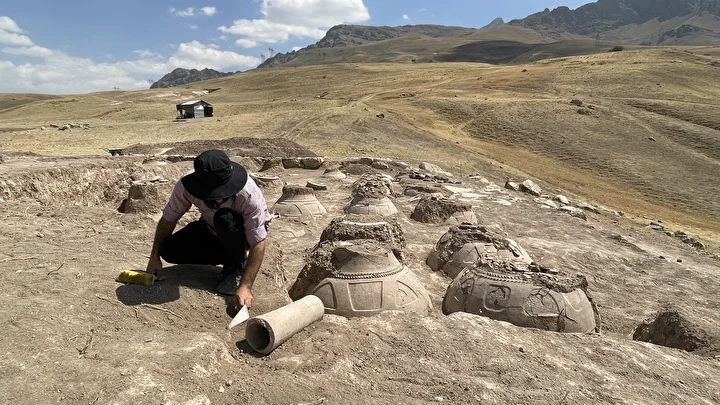
76 Cuneiform-Inscribed Pithoi Unearthed in Kevenli Fortress: Uncovering Urartu’s Largest Ancient Storage Center
Archaeologists in Türkiye’s eastern Van province have unearthed 76 massive pithoi (storage jars) inscribed with cuneiform markings at Kevenli Fortress, a Urartian stronghold on the slopes of Mount Erek. The exceptional find offers new insight into Urartu’s agricultural economy and stands as the largest known ancient storage facility in the Van region. Rare Inscriptions Reveal
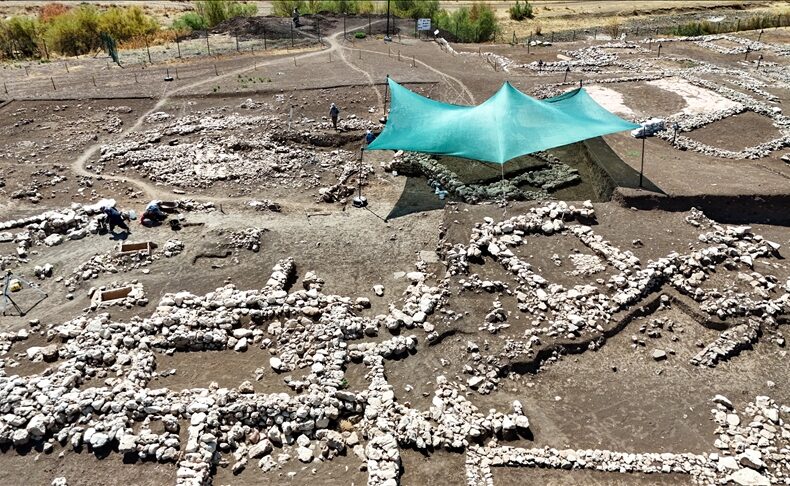
9,500-Year-Old Communal Structure with Red Floor Discovered at Türkiye’s Çayönü Tepesi
Archaeologists working at Çayönü Tepesi, a world-renowned Neolithic settlement in southeastern Türkiye, have unearthed a 9,500-year-old communal building distinguished by its vividly painted red floor. The discovery provides rare insight into early agricultural societies and the evolution of social organization in one of humanity’s earliest permanent villages. Excavations, which first began in 1964, are now
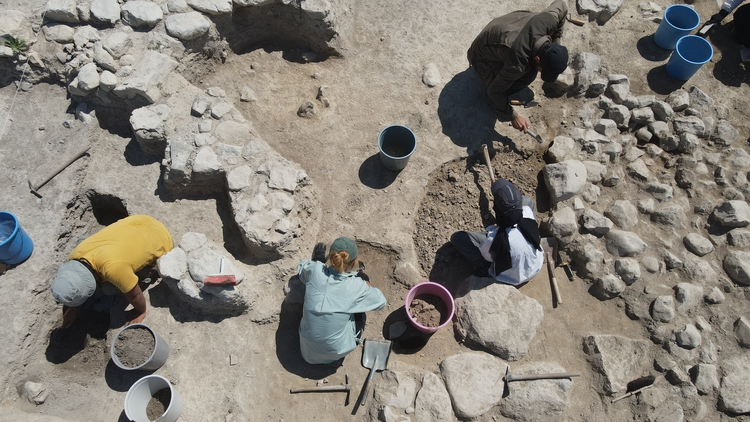
Traces of the Kaška People Unearthed at Oymaağaç Höyük: New Clues to the Hittite Sacred City of Nerik
In the Vezirköprü district of Samsun, northern Türkiye, Oymaağaç Höyük—identified over two decades of excavations as the Hittite sacred city of Nerik—has revealed new traces of the elusive Kaška people, one of Anatolia’s lesser-known indigenous groups. Recent finds, including architecture and pottery from the Middle Bronze Age and Iron Age, are offering unprecedented insights into
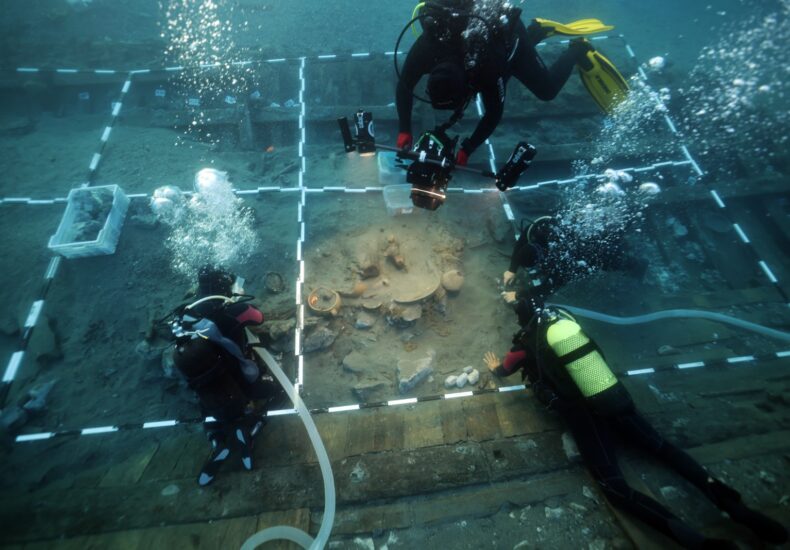
History Rises from the Depths: Lost Ottoman Shipwreck in the Mediterranean Marks a Milestone in Underwater Archaeology
A 17th-century Ottoman war and trade ship has been uncovered from the depths of the Mediterranean Sea, rewriting maritime history with its dramatic sinking story and an extraordinary trove of artifacts. Struck in battle, driven ashore, and engulfed in flames before sinking, the vessel has resurfaced centuries later as the first fully excavated Ottoman-era shipwreck
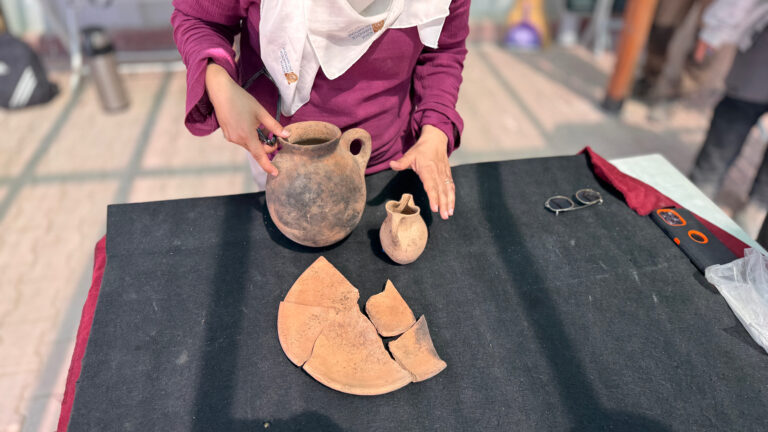
3,500-Year-Old ‘Kitchen Set’ Discovered at Karahöyük in Türkiye’s Central Anatolia
Archaeological excavations in Karahöyük, located in Konya’s Meram district, have revealed striking finds that shed light on everyday life in central Anatolia around 3,500 years ago. A complete kitchen set consisting of a jug, a plate, and a handled cup, along with silver plates wrapped in cloth, children’s toys, figurines, and cremation burials, has been
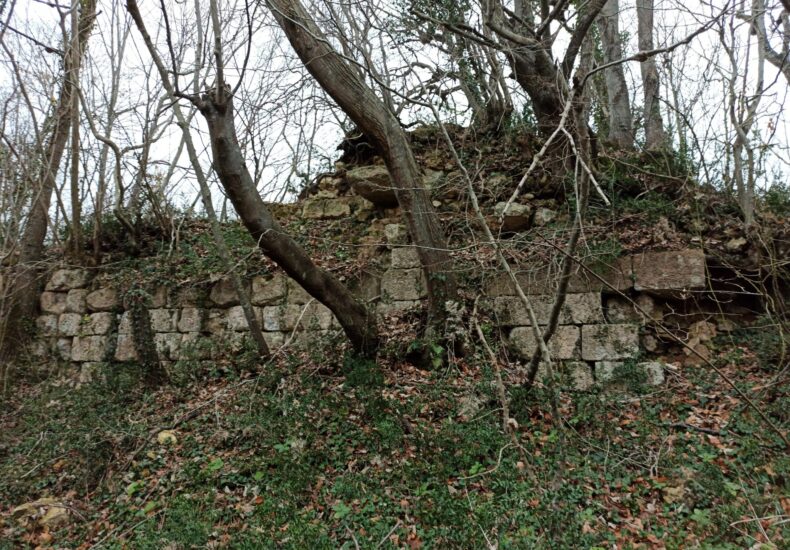
Byzantium’s Forgotten Defense Line: The 1,500-Year-Old Anastasian Wall
Few visitors exploring Istanbul’s historic treasures know that 65 kilometers west of the city, hidden among forests and fields, lies one of Byzantium’s most ambitious but forgotten fortifications: the Anastasian Wall, also known as the Long Walls of Thrace. Built in the early 6th century under Emperor Anastasios I, this massive line of defense once
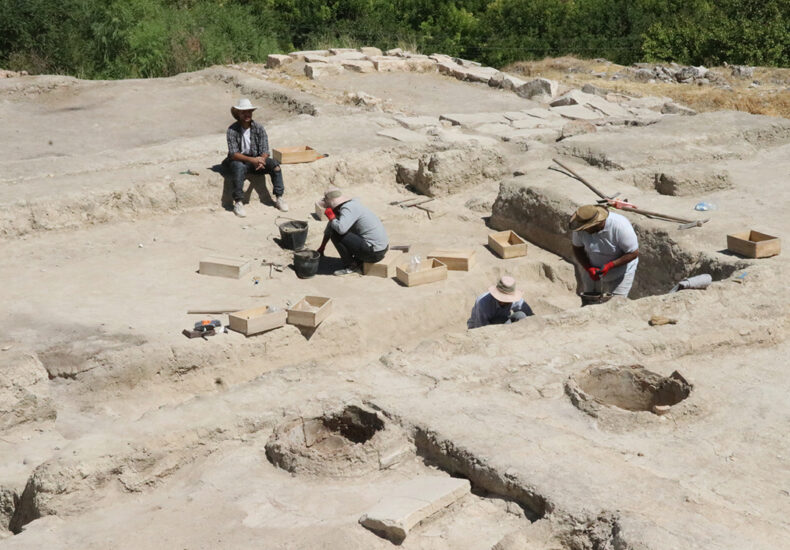
3,000-Year-Old Neo-Hittite Meat Oven Discovered at Arslantepe Mound
In eastern Türkiye, archaeologists at Arslantepe Mound have unearthed a 3,000-year-old underground meat oven dating to the Neo-Hittite period. Although resembling a traditional tandır, the structure served a different purpose. The discovery is regarded as a striking development for both archaeology and gastronomy. Located just 7 kilometers from Malatya’s city center, Arslantepe was continuously inhabited
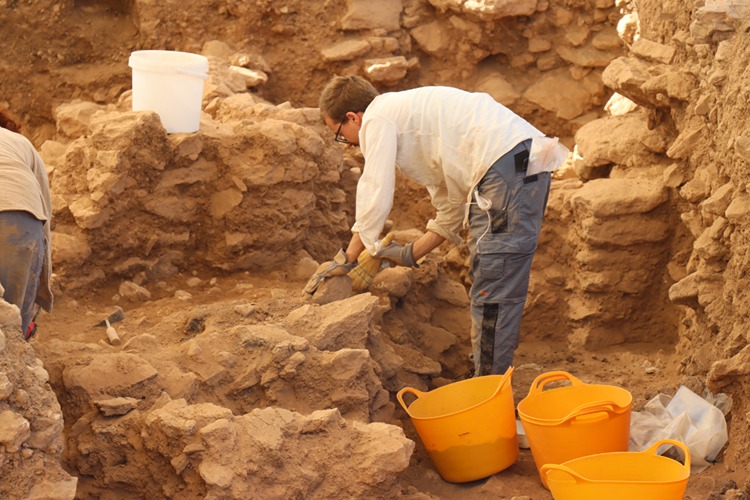
Sayburç Excavations Reveal 12,600-Year-Old Neolithic Settlement with Over 50 Structures
Archaeological excavations in Şanlıurfa, southeastern Türkiye, are shedding new light on one of the most critical turning points in human history. At the Sayburç Neolithic settlement, researchers have uncovered more than 50 structures dating back 12,600 years. The excavations are part of the “Taş Tepeler Project”, a large-scale initiative led by the Ministry of Culture

Search for the Battlefield of the 1101 Crusade Begins in Ereğli, Türkiye
Archaeologists and historians have launched a surface survey in Ereğli, Konya, to determine the exact location of the Battle of Ereğli, one of the decisive clashes of the Crusade of 1101. The fieldwork is being carried out between the neighborhoods of Akhüyük and Çiller with the participation of a 15-member team. Among them are Prof.
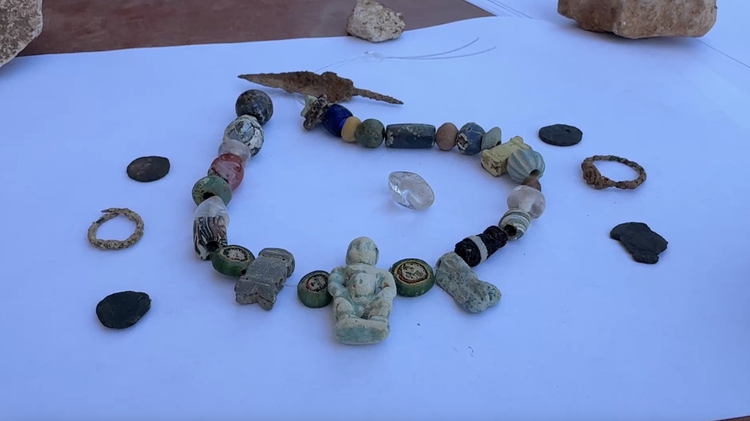
First in Anatolia: Figure of the Egyptian God Pataikos Unearthed in Perre Ancient City
A discovery in Perre Ancient City (Adıyaman, Türkiye) has not only excited archaeologists but also reshaped how we look at the cultural links between Anatolia and Egypt. In one of the five great cities of the Kingdom of Commagene, excavations revealed a 2,100-year-old chamber tomb containing a figure of the Egyptian protective god Pataikos. Egyptian
